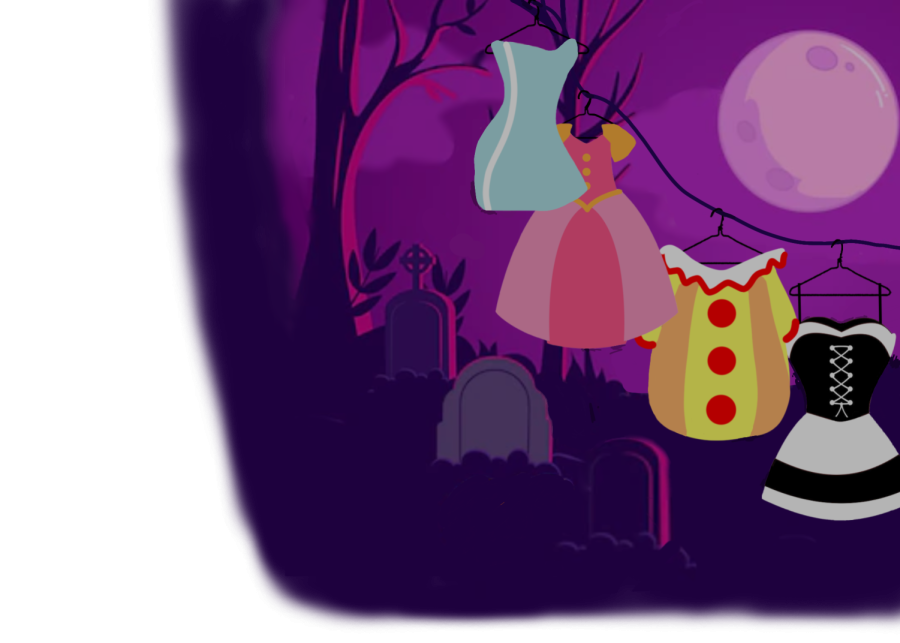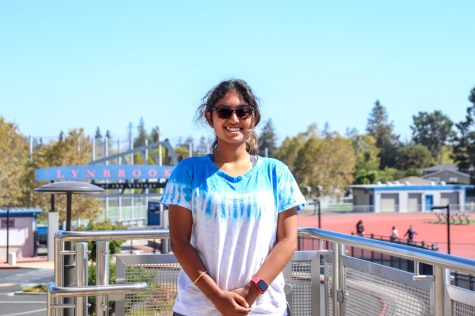The sexualization of Halloween costumes
Graphic Illustration by Calvin Zhou and Riki Murase
Looking at the history of Halloween Costumes and how in recent times they have become more sexualized.
November 7, 2022
Skin, undergarments and sexy clothing have become a major aspect of Halloween as party culture increasingly dominates the holiday. In response to this shift, a majority of teenagers and adults have chosen to stop wearing scary attire and begun to partake in more clubwear-based costumes.
Originating in the Colonial era, Halloween came about in Europe as a night designated for telling ghost stories and playing pranks. Mimicking these traditions, American Halloween involved dressing up as ghosts and witches and going door to door, asking for candy. A major change occurred in the 1900s, with people beginning to dress up as popular figures instead of just scary apparitions. In the 1980s, gory costumes became popular after the release of the well-known slasher movie “Halloween.” By the 2000s, costumes moved out of just the horror genre and people started to dress up as characters, such as politicians following infamous political scandals. As the 2010s came in, Halloween parties had become a crucial part of Halloween, a way for people to dress up with their friends.
“Halloween is the one night a year when a girl can dress like a total slut and no other girls can say anything about it.” Quotes like this from the popular movie Mean Girls reflect the increased emphasis on promiscuous attire in the holiday, especially affecting teenage girls. The movie depicts girls being outcasted for choosing not to participate in wearing skimpy costumes, alluding to peer pressure as a factor in the rapid sexualization of the holiday. Since the 2000s, movies like these have dominated youth television, contributing to the popularization of sexy costumes. Influencers also perpetuate this, often dressing up in multiple costumes during “Halloweekend” and posting on social media.
“Halloween has changed a lot since it was first started,” University of Manhattan Gender Studies professor Sharon Lamb said. “It is now more sexualized with people being pressured by their peers and role models to dress in a more exposing manner. TV shows and movies have also become more explicit, causing students to also dress up more exposingly.”
Another costuming trend that has grown increasingly loved by students is anime cosplay. Cosplay, which is simply costume play, is done by mimicking the look of certain fictional characters. Anime fans often portray their favorite characters through bright wigs, extravagant dresses and over-the-top makeup. Shows such as “Rascal Does Not Dream of Bunny Girl Senpai” and “Kill La Kill” feature female characters who are objectified or overly sexualized, resulting in costumes that mimic this trend, often worn by the minors watching them.
“I dressed up as Bunny Girl Senpai, a sexualized character, one time for Halloween, and it was just to cosplay her,” senior Mars Fabila said.
Sexy versions of certain occupations as costumes, such as nurses and policewomen are often a common choice. Often decorated with fancy names such as “Naughty Nurse” or “Lady Law”, these costumes sexualize the professions and give the public an altered image of them. Even a simple Google search of schoolgirls would show sexualized school uniforms while schoolboys would have a contrasting result.
There is also a clear contrast between the sexualization of costumes advertised for women in comparison to those for men. According to a 2017 study by the West Chester University of Pennsylvania, while 90% of all women’s Halloween costumes are sexualized to some degree, only about 11% are for men. These women’s costumes usually involve short skirts, high heels, garters or fishnet stockings.
“There is definitely a difference between male and female costumes and how they are marketed.” freshman Alessandra Wong said. “For example, women’s cat costumes are often very sexualized, but for men there are a variety of modest options.”
However, revealing costumes can also be a source of empowerment, and representation of ownership over one’s own body. A vital aspect of being a teenager involves newfound liberties, including the freedom to make one’s own choices when it comes to clothing and how they express themselves. Especially as children transition into party-based high school or college cultures, they grow more affected by their peers and the decision to dress a certain way.
As Halloween has evolved beyond its original prank-based intent into an opportunity to let go and celebrate with friends, costume choices have respectively adapted, placing more importance on looks and glamor than horror or gore.





























































